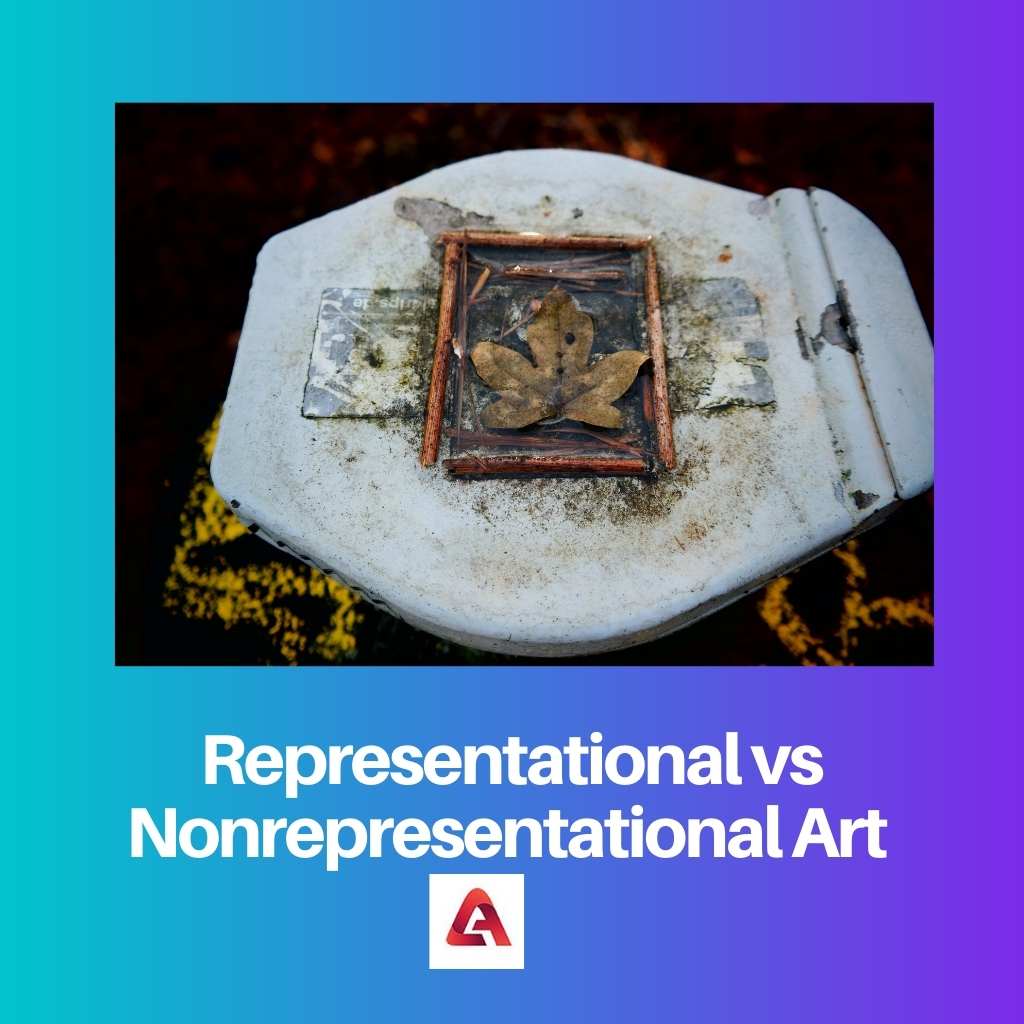Different forms of artworks are a source of appreciation. While some artworks offer an easy recognition of the subject, others are rather subjective.
Each artwork has its respective significance and meaning and may appeal differently to different viewers. Representational art and nonrepresentational art are two well-known types of artworks.
While they may seem similar, representational art and nonrepresentational art have several points of difference.
Key Takeaways
- Representational art depicts recognizable objects, people, or scenes, while nonrepresentational art focuses on abstract forms and shapes without specific references to the real world.
- Representational art aims to portray subjects accurately or interpret them artistically, whereas nonrepresentational art seeks to evoke emotions or ideas through color, form, and texture.
- Representational art includes landscapes, portraits, and still lifes, while nonrepresentational art includes abstract expressionism, color field painting, and geometric abstraction.
Representational vs Nonrepresentational Art
The difference between representational and nonrepresentational art is that representational art includes pieces of art that are easily identifiable and are derived from real life. On the other hand, nonrepresentational art refers to the form of art that is abstract and not derived from real life.

Representational art is an artwork that represents objects of the real world with close similarity. Representational art may sometimes be classified as figurative art.
However, it need not necessarily contain figures. Paintings and sculptures are a common example of representational art. The artworks of buildings, ships, and people are a category of artwork under representational art.
Nonrepresentational art is a popular form of artwork that does not represent people, places or things. Instead, they have the potential to express emotions and feelings.
Various shapes, lines, and colours are used to create nonrepresentational art. While it is assumed that nonrepresentational art and abstract art are identical, this is not true. The meaning of nonrepresentational art is subjective.
Comparison Table
| Parameters of Comparison | Representational Art | Nonrepresentational Art |
|---|---|---|
| Meaning | Representational art is easily recognisable. | Nonrepresentational art is not easily recognisable. |
| Subject of Art | Representational art includes people, places, objects, and things from real life. | Nonrepresentational art includes lines and shapes. |
| Abstraction | Representational art excludes any level of abstraction. | Nonrepresentational art is purely abstract. |
| Subjectivity | Representational art conveys a specific meaning or idea. | Nonrepresentational art is subjective. |
| Example | Painting of a bus or sculpture of a famous personality. | Mondrian’s work, such as “Tableau I.” |
What is Representational Art?
Representational art refers to the form of art that is recognisable for what it purports to be. Some common examples of representational art are a human figure, an apple, or a fleet of sheep.
In addition, representational artworks need not necessarily be true to life. For instance, a strawberry need not be red, but it must be easily identifiable as a strawberry.
In simple words, representational art is a form of art that is easily identifiable as a part of life. However, representational art doesn’t need to be completely identical to a real object or person.
There are four well-known types of representational art: realism, impressionism, idealism, and stylization. Each type has its respective features and characteristics.
The artworks painted photographically are a part of realism representational art. Impressionism employs short, thin brushstrokes that provide in-depth detail in artistic work.
In addition, the perfect and most beautiful version of realism is idealism. Lastly, stylization is a specific type of realism that includes decorative elements. Thus, each category serves an important function.
There is no distortion or exaggeration in representational art. Consequently, representational art allows the viewer to understand the artwork. There are several examples of representational art.
For instance, the painting of a dog looks identical to that of a dog. Similarly, the artwork of a ship closely resembles one in real life. To conclude, representational art offers a wide array of specificity and descriptive art.

What is Nonrepresentational Art?
Nonrepresentational art refers to a form of artwork that doesn’t represent anything from the real world. This artwork is the most extreme form of abstract art secluded from the visible world.
Generally, nonrepresentational art does not depict a building, ships, or people. Several famous artworks are an example of nonrepresentational art.
In simple words, nonrepresentational art is nothing but what the artist wants it to be and what the viewer comprehends it to be.
The splashes of paint in Jackson Pollock’s work is nonrepresentational art. In addition, the colour blocked squares typical to Mark Rothko’s paintings is another well-known example of nonrepresentational art.
The most prominent feature of nonrepresentational art is that it is subjective. The viewers have the freedom to interpret the artwork and give it whatever meaning they wish to.
Nonrepresentational art is, therefore, the exact opposite of representational art. While the painting of a still teapot is easily identifiable in real life, there is no such facility in nonrepresentational art.
Nonrepresentational art has its significance in the world of art. It is appreciative as it allows viewers to appreciate the intangible nature of many things that exist in nature.
It can mean something to one person and nothing to another person. Nonrepresentational art allows artists and viewers to appreciate the beauty and the plethora of emotions that art can convey.

Main Differences Between Representational and Nonrepresentational Art
- While representational art is the artwork of people, places, things, or objects, nonrepresentational art is the artwork that uses lines and shapes.
- Representational art conveys an obvious meaning whereas nonrepresentational art conveys a subjective meaning.
- Representational art does not express emotions or feelings. In contrast, some pieces of nonrepresentational art convey emotions and feelings.
- Representational art originated about 25000 years ago whereas nonrepresentational art came into existence in the 1940s.
- A simple portrait or a table in still life are examples of representational art. Examples of nonrepresentational art are artworks by Pablo Picasso.

- https://drawpaintacademy.com/representational-art/
- https://wastedtalentinc.com/what-is-non-representational-art/
